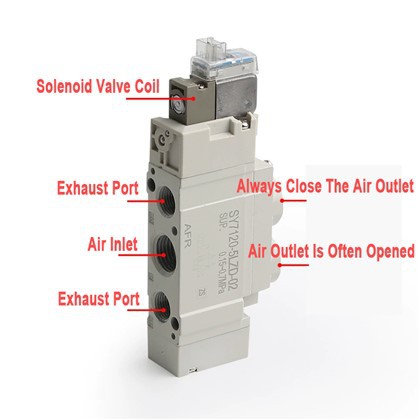Installing a pneumatic solenoid valve involves several steps to ensure proper functioning and safety. Here's a general guide:
### 1. **Preparation**
- **Safety First**: Ensure the system is depressurized before beginning installation. Turn off all power sources connected to the valve.
- **Check Compatibility**: Verify that the valve specifications match the requirements of your system, including voltage, pressure, and flow rate.
- **Inspect the Valve**: Check the valve for any damage or defects before installation.
### 2. **Mounting the Valve**
- **Choose the Mounting Position**: Pneumatic solenoid valves are typically mounted in any position, but mounting horizontally is often recommended for optimal performance.
- **Secure the Valve**: Use appropriate brackets or fasteners to secure the valve in place. Ensure it is stable and aligned with the flow direction indicated on the valve body.
### 3. **Connecting the Pneumatic Lines**
- **Align the Ports**: Connect the pneumatic supply line to the inlet port and the output line to the outlet port. Ensure that the connections are secure and leak-free.
- **Use Teflon Tape**: Apply Teflon tape to threaded connections to prevent air leaks.
- **Check the Flow Direction**: Make sure the flow is consistent with the directional arrows on the valve.
### 4. **Electrical Wiring**
- **Connect the Solenoid**: Wire the solenoid according to the manufacturer's instructions, ensuring that the power supply matches the valve's voltage rating.
- **Grounding**: Properly ground the valve to prevent electrical hazards.
- **Check Connections**: Double-check all electrical connections to ensure they are secure and insulated.
### 5. **Testing the Installation**
- **Pressurize the System**: Gradually reintroduce air pressure to the system and check for any leaks around the valve.
- **Function Test**: Activate the solenoid to ensure the valve opens and closes properly. Observe the operation to confirm that air flows correctly and that there are no malfunctions.
### 6. **Maintenance**
- **Regular Inspection**: Periodically check the valve for signs of wear or damage. Clean the valve components as needed to prevent clogging.
- **Replace Worn Parts**: Replace seals, gaskets, or the solenoid coil if necessary to maintain optimal performance.
By following these steps, you can successfully install a pneumatic solenoid valve and ensure its proper operation in your system【6†source】【7†source】.






